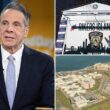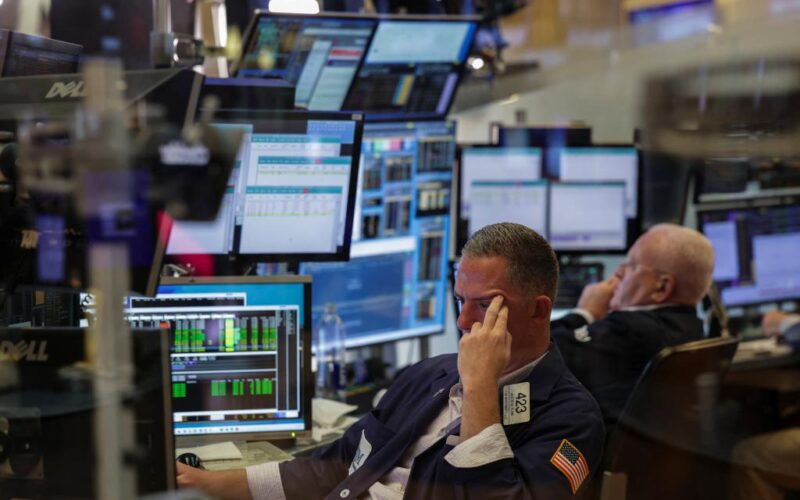Markets fell sharply Friday morning as concerns over cooler-than-expected employment figures and anxiety over President Trump’s tariffs put a halt to their scorching run.
In mid-morning trading, the Dow was down 538.07 points to 43,592.91, representing a 1.22% decline. The S&P 500 fell 84.72 points to 6,254.67, down 1.34%, while the Nasdaq dropped 357.10 points to 20,765.35, losing 1.69% of its value.
Both the broad-based S&P and the tech-heavy Nasdaq had broken record highs in intraday trading on Thursday.
The selloff came after the Bureau of Labor Statistics reported an increase of 73,000 nonfarm payroll positions in July — below economist expectations for 100,000 new positions.
Private sector employment increased by 83,000, while government jobs declined by 10,000, according to the data.
The unemployment rate held steady at 4.2%, matching June’s level, according to a separate BLS report Friday.
Wage growth, meanwhile, maintained its strength at 3.7% annually, continuing to outpace inflation, which currently runs at 2.4%.
“Inflation has cooled, wages have increased, unemployment is stable, and the private sector is growing,” White House spokesperson Karoline Leavitt told The Post.
“President Trump’s America First agenda has ensured new jobs go to American citizens, instead of illegals or foreign-born workers.”
Leavitt also hit out at Fed Chair “Jerome ‘Too Late’ Powell,” saying that the central bank chief “needs to cut rates so our economy can continue to boom.”
However, the weaker-than-expected hiring data combined with looming tariff increases set to take effect next week triggered concern that the economy could be heading toward a downturn.
Market analysts attributed the steep losses to growing pessimism about economic fundamentals as multiple challenges converge simultaneously.
“While investors have been viewing the commencement of the Fed cutting cycle as a positive catalyst for risk assets, today’s release is best characterized as ‘bad news is bad news’ in our view,” Jeffrey Schulze, head of economic and market strategy at ClearBridge Investments, told CNBC.
“With job creation at stall speed levels and the tariff headwind lying ahead, there’s a strong possibility of a negative payroll print in the coming months which may conjure up fears of a recession.”
The Trump administration is preparing to implement sweeping new tariffs beginning Aug. 7, affecting imports from approximately 70 countries.
The trade duties will range from 10% to 41%, replacing temporary baseline rates and significantly escalating trade tensions globally.
Several major trading partners face immediate impacts.
Canada will see tariffs on most exports increase from 25% to 35% as of August 1, while Mexico maintains 25% duties on certain goods for an additional 90 days following last-minute negotiations.
Brazil faces 50% tariffs on most exports, and India will encounter 25% duties starting next week.
The cumulative effect represents a dramatic shift in US trade policy, with the average tariff rate jumping from approximately 2.3% in early 2024 to around 18% after full implementation.
The business community has expressed mounting concern about the economic implications of the tariff expansion.
Small Business Majority Founder and CEO John Arensmeyer highlighted the challenges facing entrepreneurs in a statement released Friday.
“The latest round of tariffs has infused small businesses with a renewed sense of dread,” Arensmeyer said.
Arensmeyer added that the tariffs were causing “months-long confusion and uncertainty” and that the “shifting goalposts makes it nearly impossible for any small business to plan for the future.”
“After all, there is virtually nothing small businesses can do to avoid tariffs in the short term,” he said, adding: “Even products dubbed ‘made in America’ are often assembled from imported components.”








